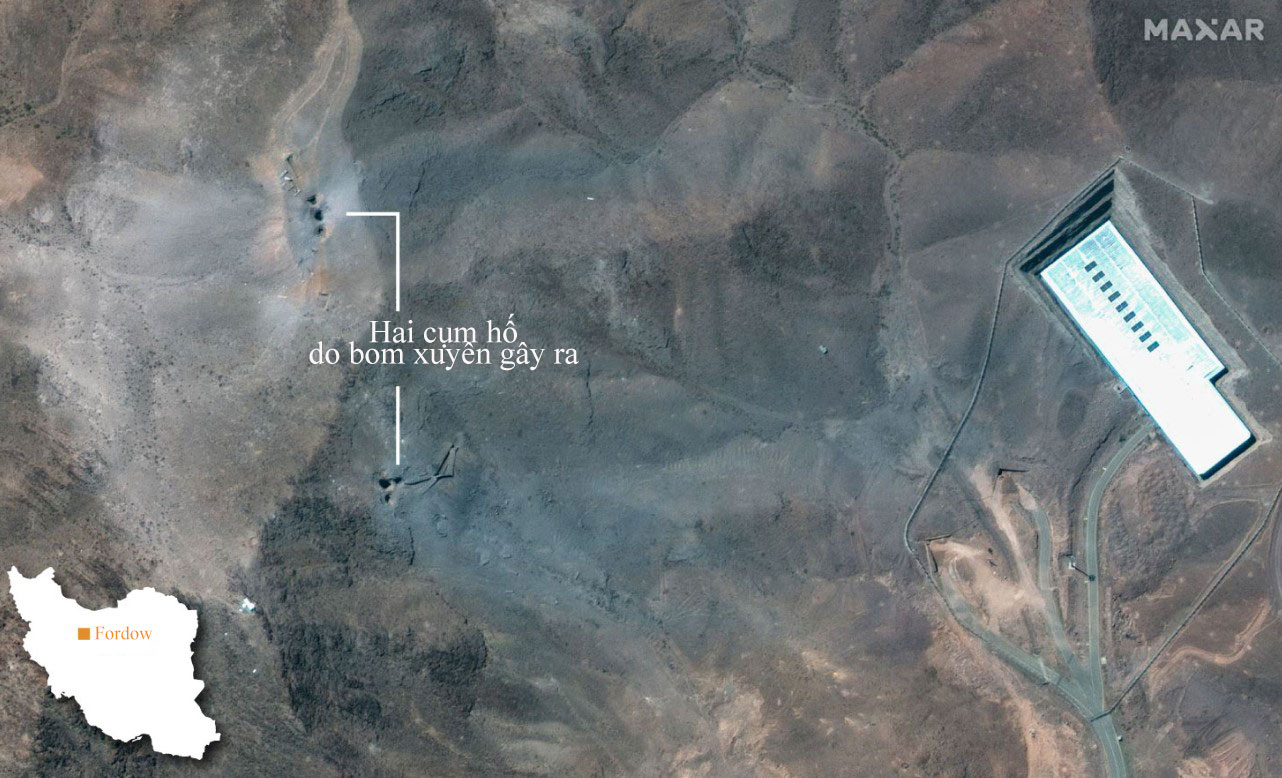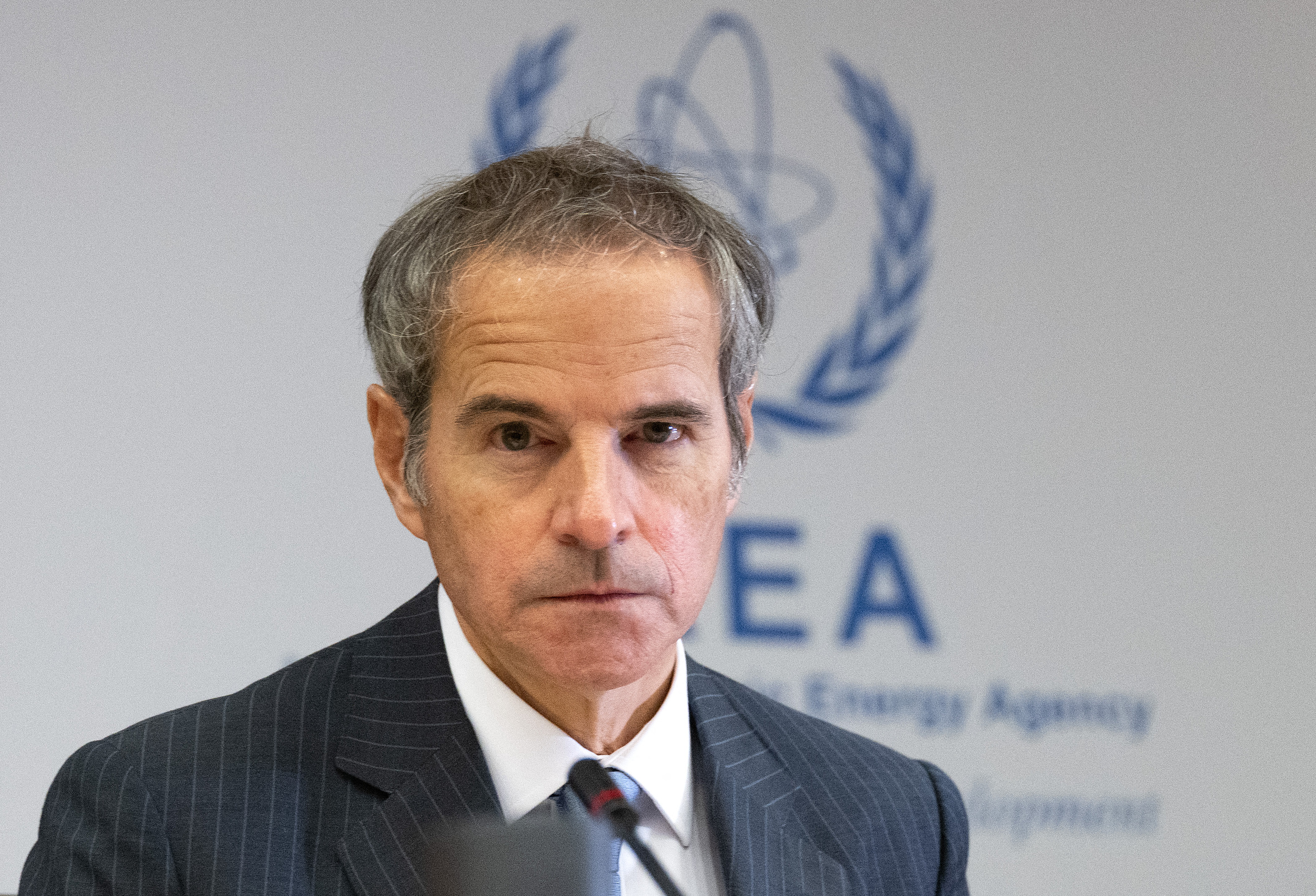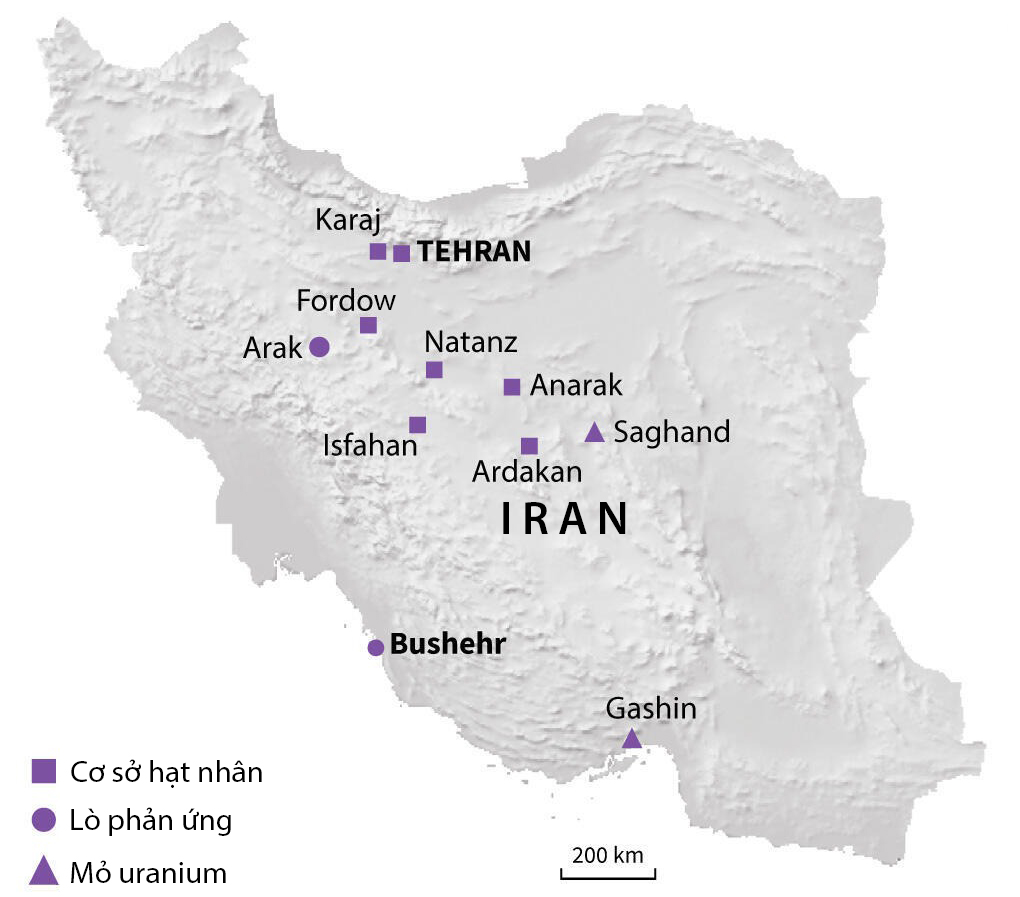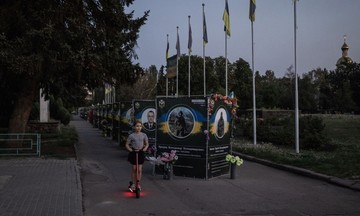On 23/6, International Atomic Energy Agency (IAEA) Director General Rafael Grossi commented on the Fordow nuclear facility, a day after the US attacked it with 14-ton GBU-57 bunker-buster bombs. "Considering the amount of explosives used and the centrifuge's extreme sensitivity to shocks, it's likely the facility sustained very heavy damage," he said.
Satellite images taken after the airstrike show six large craters on the mountainside above the Fordow facility, with dust and debris scattered around. Some craters have irregular shapes, suggesting at least two GBU-57 bombs were dropped at the same location to maximize penetration into the underground facility.
 |
Large craters appeared on the mountainside at the Fordow nuclear facility. Photo: Maxar |
Large craters appeared on the mountainside at the Fordow nuclear facility. Photo: Maxar
The Fordow facility is believed to be 80-90 meters deep, while the GBU-57's maximum penetration depth is 60 meters. However, dropping two bombs consecutively at the same spot could increase the penetration power. The bomb can destroy everything within a 300-meter radius when detonated underground.
However, Grossi, head of the UN nuclear watchdog, emphasized that "no one, including the IAEA, can fully assess the underground damage at Fordow at this time".
He added that the US military hit buildings at the Isfahan complex used for uranium conversion, a step before enrichment. Entrances to tunnel systems where Iran stores enriched nuclear material were also targeted. At the Natanz facility, US aircraft struck a uranium enrichment plant.
 |
International Atomic Energy Agency (IAEA) Director General Rafael Grossi speaks on 23/6 in Vienna, Austria. Photo: AFP |
International Atomic Energy Agency (IAEA) Director General Rafael Grossi speaks on 23/6 in Vienna, Austria. Photo: AFP
Grossi revealed that on 13/6, Tehran sent him a letter informing him that Iranian officials were implementing "special measures to protect nuclear equipment and materials", seemingly hinting at moving uranium to a different location.
Rossi stated that the IAEA cannot currently determine the location of Iran's 400 kg of 60%-enriched uranium. He urged Iran to allow IAEA inspectors to visit its nuclear facilities and "take stock" of its enriched uranium reserves, a move that could pave the way for renewed negotiations.
Grossi commented, "No one should be allowed to attack nuclear facilities. I call on all parties to exercise maximum restraint. Military escalation not only threatens human lives but also delays finding diplomatic solutions. Only through negotiations can the goal of preventing Iran from acquiring nuclear weapons be achieved." He also warned of cross-border consequences if Iran's nuclear facilities leak radiation.
 |
Locations of Fordow, Natanz, Isfahan and other Iranian nuclear facilities. Graphic: AFP |
Locations of Fordow, Natanz, Isfahan and other Iranian nuclear facilities. Graphic: AFP
In the early hours of 22/6, the US military launched airstrikes on three key Iranian nuclear facilities: Fordow, Natanz, and Isfahan. US Chairman of the Joint Chiefs of Staff Dan Caine said the operation, codenamed "Night Hammer", involved 14 bunker-buster bombs, more than 20 Tomahawk missiles, and over 125 military aircraft.
Fordow is a high-level uranium enrichment site with around 2,000 operating centrifuges. The plant produces most of Iran's 60%-enriched uranium. The complex is dubbed a "nuclear fortress" due to its location deep inside a mountain.
Israel targeted Fordow in a previous airstrike on Iran but failed to disable it. Tel Aviv stated that only the US GBU-57 bomb could destroy the facility.
Thanh Danh (AFP, Reuters, Al Jazeera)












